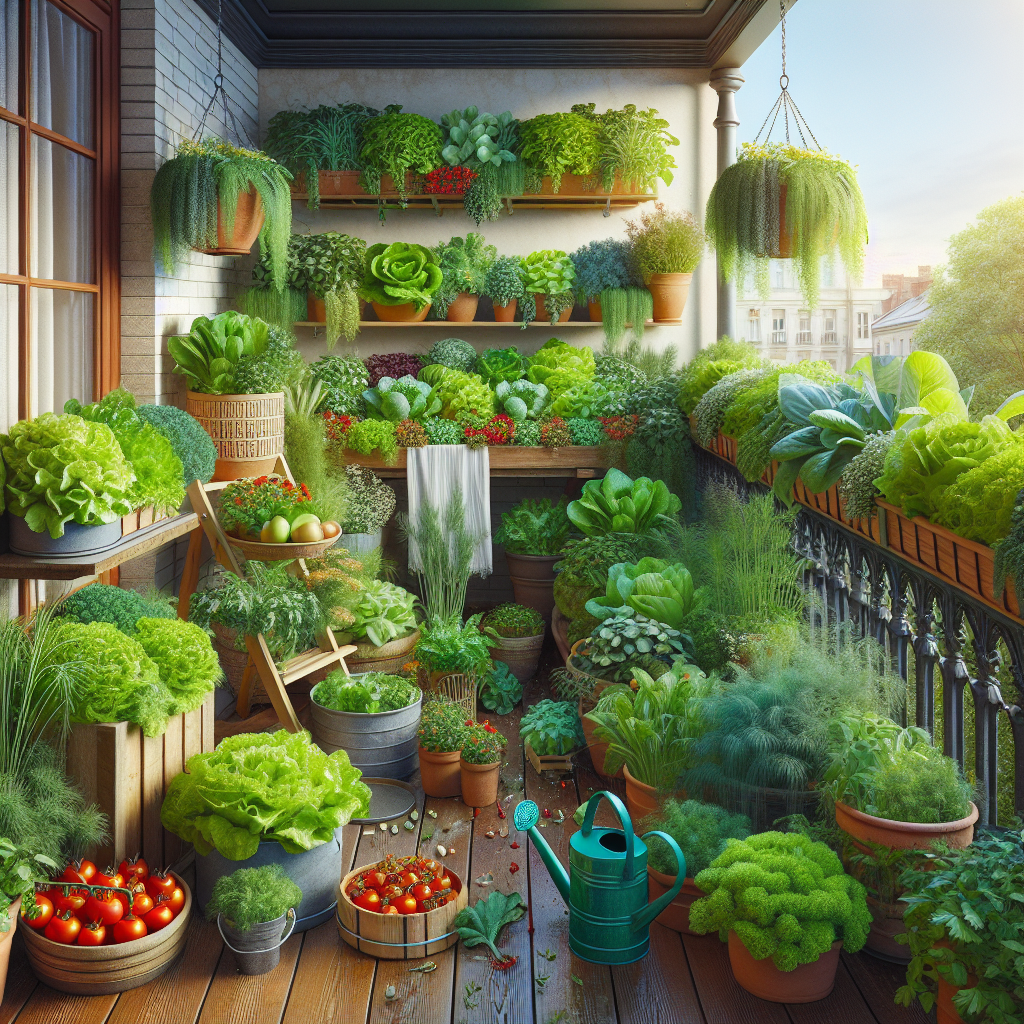In today’s busy world, it can be difficult to find the time to eat healthy and incorporate fresh vegetables into our diets. However, one way to ensure that you are getting your recommended daily intake of vitamins and nutrients is by growing a salad garden on your balcony. Not only is this a fun and rewarding project, but it can also save you money in the long run.
Growing a salad garden on your balcony is easier than you might think. All you need is a few basic supplies, some soil, and a little bit of patience. In this article, we will explore the benefits of growing your own salad garden, as well as provide you with some tips and tricks to help you get started.
Benefits of Growing a Salad Garden on Your Balcony
There are numerous benefits to growing your own salad garden on your balcony. Here are just a few:
1. Freshness: When you grow your own vegetables, you can harvest them at peak ripeness, ensuring that they are as fresh and flavorful as possible.
2. Nutritional Value: Store-bought vegetables often lose some of their nutritional value during transportation and storage. By growing your own salad garden, you can ensure that you are getting the maximum amount of vitamins and minerals from your veggies.
3. Cost Savings: Buying fresh produce at the grocery store can be expensive. By growing your own salad garden, you can save money in the long run by harvesting what you need when you need it.
4. Environmental Benefits: Growing your own vegetables reduces the carbon footprint associated with transporting produce from farm to table.
Tips for Growing a Salad Garden on Your Balcony
Now that we’ve explored the benefits of growing a salad garden on your balcony, let’s discuss some tips for getting started:
1. Choose the Right Plants: When planning your salad garden, be sure to choose plants that are well-suited for container gardening. Some good options include lettuce, tomatoes, cucumbers, bell peppers, and herbs like basil and parsley.
2. Select the Right Containers: Make sure to choose containers that have good drainage holes at the bottom to prevent water from pooling around the roots of your plants. You can use traditional terra cotta pots or get creative with repurposed items like old buckets or wooden crates.
3. Use Quality Soil: Invest in high-quality potting mix specifically formulated for container gardening. This will provide your plants with essential nutrients and ensure proper drainage.
4. Provide Adequate Sunlight: Most vegetables require at least 6-8 hours of sunlight per day to thrive. Be sure to place your containers in a sunny spot on your balcony where they will receive plenty of sunlight.
5. Water Regularly: Container gardens tend to dry out more quickly than traditional gardens, so be sure to water your plants regularly – usually once or twice a day depending on weather conditions.
6. Harvest Frequently: To encourage continuous growth and prevent overcrowding in your containers, be sure to harvest leafy greens like lettuce regularly by picking off outer leaves as needed.
7. Fertilize Occasionally: In addition to using quality potting mix, consider fertilizing your plants every few weeks with an organic fertilizer to ensure they have all the nutrients they need to thrive.
In conclusion, growing a salad garden on your balcony is not only a fun and rewarding project but also a great way to ensure that you are incorporating fresh vegetables into your diet. With just a few basic supplies and some patience, you can enjoy delicious salads made from homegrown produce all season long. So why not give it a try? Your body – and taste buds – will thank you!














